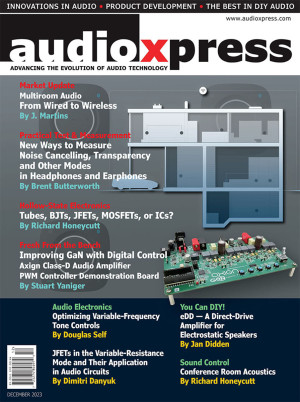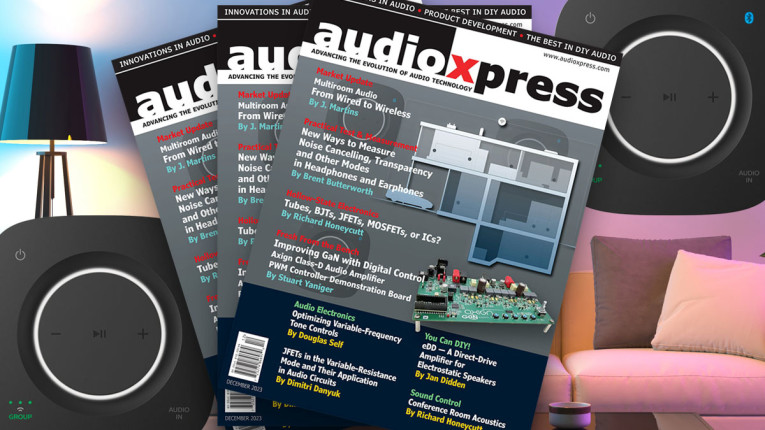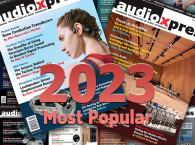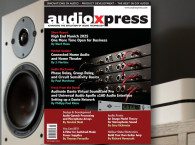 From wired to wireless, that's how we defined our approach for another Market update focused on residential audio integration, and more specifically on the whole-home infrastructure, multizone, and multiroom audio. With recent developments, this is an area that increasingly appeals to homeowners, particularly those with the ability to benefit from different, separate areas, including outdoors. This article traces the evolution of multiroom audio, wired and wireless, and the transition from infrastructure-level projects to a hybrid approach where consumers are gaining more control, as signal sources transition to smart TVs and multichannel wireless becomes an attractive possibility in the living room.
From wired to wireless, that's how we defined our approach for another Market update focused on residential audio integration, and more specifically on the whole-home infrastructure, multizone, and multiroom audio. With recent developments, this is an area that increasingly appeals to homeowners, particularly those with the ability to benefit from different, separate areas, including outdoors. This article traces the evolution of multiroom audio, wired and wireless, and the transition from infrastructure-level projects to a hybrid approach where consumers are gaining more control, as signal sources transition to smart TVs and multichannel wireless becomes an attractive possibility in the living room.A cover highlight for audioXpress December 2023, Stuart Yaniger reviews the Axign and GaN Systems latest Class-D audio amplifier board, which demonstrates the benefits of Axign's digital controllers and its unique approach of digital post-filter feedback. The reference design board uses GaN Systems' output devices, configured as two 500W channel BTL (2 Ohm) at 50V. And features the Axign AX5689, an eight-channel audio amplifier controller IC with digital inputs and CMOS level PWM outputs, enabling high-order digital control loops with post-filter feedback. The combination enables unique audio systems that are smaller, sleeker, more efficient, and more powerful than ever before.
In a practical test and measurement feature, Brent Butterworth details new ways to measure noise cancelling, transparency, and other modes in wireless headphones and earphones, and true wireless earbuds. As an experienced product reviewer in this category, Butterworth was invited to visit HEAD acoustics' US headquarters in Brighton, MI, to learn about all the solutions the company has developed for this purpose, based on measurement techniques outlined in ETSI standards. Now that headphones and earphones are adding situational awareness, hearing protection and hearing enhancement features, the company offers new test methods to evaluate these functions, faithfully simulating environments that a consumer might typically encounter when using products with these features, which can include any combination of ANC (or passive noise blocking), a hear-through function, voice enhancement, and hearing protection.
In his Sound Control column, Richard Honeycutt writes about Conference Room Acoustics, and the specificities of these rooms, which have changed significantly over time, particularly as conference technologies evolved with unified communications and remote collaboration. Interior designers and facility owners now have interesting options for the acoustical performance of a conference room, especially in the crucial area of speech intelligibility. Those include modern microperforated materials to use in glass surfaces and other aesthetically pleasing solutions that are also effective acoustic treatment options.
In this issue, audioXpress is also proud to offer a hefty dose of great audio electronics articles, starting with industry expert Douglas Self writing about Optimizing Variable-Frequency Tone Controls. As the author shares, "I think bass and treble tone controls are absolutely essential in a hi-fi system, and I will go further to say that variable–frequency bass and treble tone controls are very desirable indeed, because of their much greater flexibility." In the design considered in his article, the frequency at which control begins in each band is variable over a 16 to 1 range, making it much more useful for correcting speaker deficiencies or room anomalies. Something that very few manufacturers have offered.

Next up, expert audio circuit designer Dimitri Danyuk explores the variable-resistance mode of JFET operation and describes a practical circuit, built around JFETs in the variable resistance-mode with a drain load resistor. Unlike a JFET used in saturation mode (pinch-off or pentode), in the variable-resistance mode (resistive mode, Ohmic region or triode region) the JFET behaves like a resistor whose value is controlled by the voltage between gate and source Vgs. The example circuit is applied in a complete phono preamp design in transconductance mode.
The next article details a lifetime project from our technical editor Jan Didden. After a successful restoration project of a pair of precious ESL-63 Quad electrostatic speakers, he opted to design and build the eDD, a well-performing high voltage amplifier to directly drive electrostatic speakers, with a design goal of 1500V RMS at 20mA RMS over the full audio band. This challenging but successful DIY project took a while to complete, because of the required drive signals, the demanding high voltage power supplies, and circuits for the different amplifier stages, including a tube output stage design. In the end, the project was a success, and this article shares every step of the construction.
To close this issue with a great audio electronics article, Richard Honeycutt writes an inspired piece for his Hollow-State Electronics column, discussing the evolution of audio circuits and the audible impressions obtained from tubes, BJTs, JFETs, MOSFETs, and ICs. As the article reminds us, the history of semiconductor amplifiers, from the junction field-effect transistor (JFET), to the Bell Labs transistor, or Texas Instruments' silicon-transistor, runs parallel to the ascension and twilight of vacuum tubes. Likewise, solid-state tube replacements remain a valid idea, gladly offered by some manufacturers. Read on...

As we close another year of audioXpress, we would like to gently remind you to renew your subscription for 2024, as this title is only going to get better. All the content contained in every issue of audioXpress, is the reason why, month after month, 12 times per year, this publication continues to reinforce its role as an essential resource for the audio industry. Your support and that of our advertisers is what allows us to keep this publication in print and all digital platforms and pay our independent authors and contributors for their work.
Subscribe if you haven't done so yet in order not to miss future issues, or renew your subscription. Subscribing to the digital online version allows immediate access and is available here: audioXpress Subscription Services
If you wish to buy a single printed issue or the complete audioXpress archive on USB, from 2000 to 2023 (yes, including the latest issue), just visit our online shop at www.cc-webshop.com
Don't miss out, get your copy of audioXpress right now at www.gotomyxpress.com









